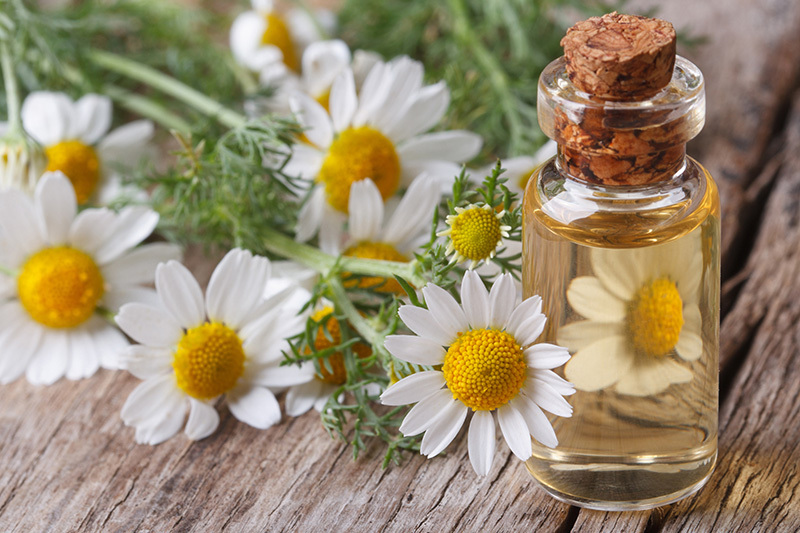Secrets to Keeping Poinsettias Vibrant Through Winter
Posted on 01/09/2025
Secrets to Keeping Poinsettias Vibrant Through Winter
Poinsettias, with their brilliant red, pink, or white bracts, are a cherished symbol of winter festivities. However, many who appreciate their delightful holiday cheer often find it challenging to maintain their vivid beauty throughout the cold months. Unlocking the secrets to keeping poinsettias vibrant through winter is all about understanding their natural growth cycles and offering attentive care. This comprehensive guide will reveal insider tips and best practices to ensure your poinsettia plants remain lush, colorful, and healthy all winter long.

Understanding Poinsettias: More Than a Holiday Plant
Poinsettias (Euphorbia pulcherrima) are native to the warm, tropical forests of Mexico and Central America, where they grow as perennial shrubs reaching up to 12 feet in height. In their natural habitat, these plants thrive in consistent warmth, humidity, and filtered sunlight. When brought indoors to decorate homes in cooler climates, poinsettia plants require special attention to remain robust and vibrant.
Common Poinsettia Myths Debunked
- Poinsettias are poisonous - This is a myth! While their sap can cause mild irritation, poinsettias are not fatally toxic to pets or children if ingested. Nonetheless, keep them out of reach to avoid stomach upset.
- Poinsettias only bloom once, then die - With proper care, they can live for several years and even rebloom.
- Poinsettias need total darkness for weeks - While it's true they require periods of darkness to trigger color changes, this only applies to re-blooming efforts after winter, not initial care.
Poinsettia Winter Care Guide
The secrets to keeping poinsettias vibrant through winter revolve around five main factors: temperature, light, watering, humidity, and maintenance. By mastering each aspect, you can extend the lifespan and beauty of your holiday poinsettias well past New Year.
1. Ideal Temperature for Poinsettias
- Maintain indoor temperatures between 65?F and 70?F (18-21?C) during the day. Night temperatures should not fall below 60?F (15?C).
- Avoid cold drafts from windows, doors, or sudden temperature drops, as these cause leaf drop and fading bracts.
- Do not place poinsettias near heat sources like radiators or fireplaces, as excess heat accelerates dehydration.
2. The Importance of Light
Poinsettias are naturally sun-loving, requiring about six hours of indirect, bright daylight daily:
- Place them near an east- or south-facing window, but out of direct sunlight, which can scorch their delicate leaves.
- If the days are especially short or your home is dim, supplement with a grow light to maintain their vibrancy.
- Rotate the pot every week to promote even growth and coloration on all sides.
3. Watering Strategies for Healthy Poinsettias
Improper watering is the leading cause of winter poinsettia failures. To keep your poinsettias colorful:
- Check soil moisture by inserting your finger about one inch deep; water only when the topsoil feels dry.
- Ensure adequate drainage - never allow poinsettias to sit in standing water.
- Water thoroughly until excess water drains from the bottom, then remove extra water from saucers within 15 minutes.
- Reduce watering frequency during cooler, overcast periods, but never let the soil dry out entirely.
Tip: If your poinsettia pot is wrapped in decorative foil, make sure to punch holes at the bottom and set it on a tray to prevent root rot.
4. Creating the Optimal Humidity Environment
- Poinsettias thrive in moderate humidity levels (50-60%).
- Winter heating dries indoor air, so use a humidifier nearby or place the pot on a water-filled pebble tray to increase humidity naturally.
- Misting the leaves lightly can help but avoid excess moisture on bracts to prevent fungal issues.
5. Fertilizing for Lasting Color
- While fertilizer is not necessary during active bloom, begin regular feedings after 4-6 weeks using a balanced, all-purpose houseplant fertilizer diluted to half-strength.
- Feed once a month throughout winter, particularly if the plant remains indoors and shows new growth.
Advanced Secrets to Lush Poinsettias
Repotting and Soil Tips
- Poinsettias do best in light, well-draining potting soil. Repot after the holidays if roots fill the container or if the soil is compacted.
- Use a container only slightly larger than the current one, as oversize pots retain too much moisture.
Leaf and Bract Maintenance
- Remove fading or yellowing leaves with sterilized scissors to prevent pests and diseases.
- Clean leaves gently with a damp cloth to keep pores open and maximize photosynthesis.
Pest and Disease Prevention
- Inspect regularly for aphids, whiteflies, and spider mites - all of which thrive during winter.
- Use insecticidal soap or neem oil at the first sign of trouble.
- Avoid overhead watering and overcrowding plants to reduce fungal risks.
Encouraging Re-Bloom After Winter
If you wish for your poinsettia to color up again next winter, begin "reblooming" efforts in late September:
- Provide 14-16 hours of complete darkness every night for 8-10 weeks (cover with a box, or place in a closet).
- Expose to bright indirect light during the day.
- Continue regular watering and monthly feeding.
- Once bracts start to color, return your plant to normal winter care.
Decorative Ideas for Vibrant Winter Displays
- Group poinsettias with greenery, pinecones, and winter berries for a rich seasonal vignette.
- Use contrasting pot covers to offset their color--gold or silver wraps make red bracts "pop."
- Layer different varieties--classic reds, creamy whites, and marbled pinks--for a stunning focal point.

Frequently Asked Questions on Poinsettia Winter Care
How can I keep my poinsettia leaves from dropping?
Sudden leaf drop is often caused by cold drafts, over-watering, or under-watering. Keep your poinsettia away from breezy entryways and heat vents, and stick to a consistent watering schedule after checking the soil moisture.
Is it possible to keep poinsettias alive all year?
Yes! With attentive care, poinsettia plants can survive and thrive as perennials indoors and even outdoors in frost-free regions. Once spring arrives, cut back, repot, and move to a filtered light area or shaded porch.
My poinsettia's bracts are fading. What's wrong?
Fading bracts indicate too little light, overwatering, or nutrient depletion. Move the plant to a brighter location, ensure soil drains well, and resume feeding as bracts age.
Conclusion: Enjoying Vibrant Poinsettias Through Winter and Beyond
The secrets to keeping poinsettias vibrant through winter are found in a few, simple care routines--moderate temperatures, steady light, proper watering, increased humidity, and regular monitoring for pests and diseases. With patience and dedication, you can extend the festive magic of poinsettias long after the holiday season ends, bringing color and cheer to even the coldest months.
Whether you're just discovering the joy of winter poinsettia care or refining your expert touch, these guiding principles will help your holiday stars shine beautifully all season. Uncover these winter secrets each year, and watch your poinsettias remain as fresh, lush, and vibrant as the day you brought them home!







